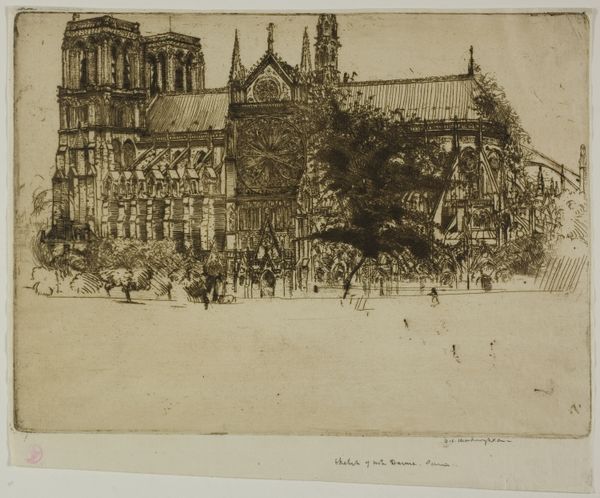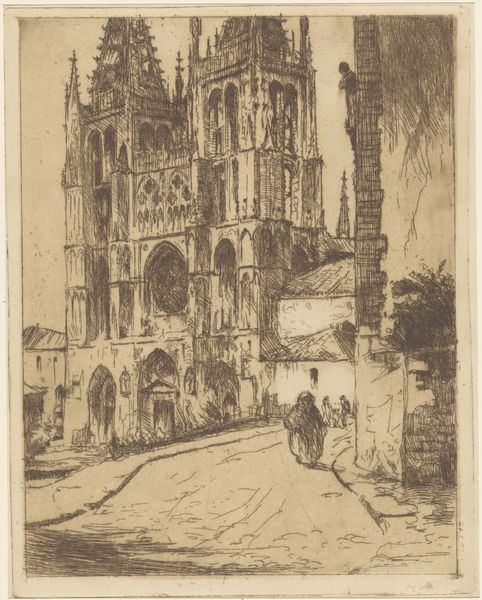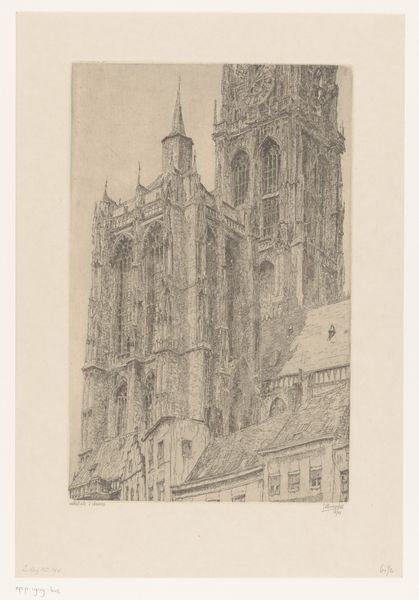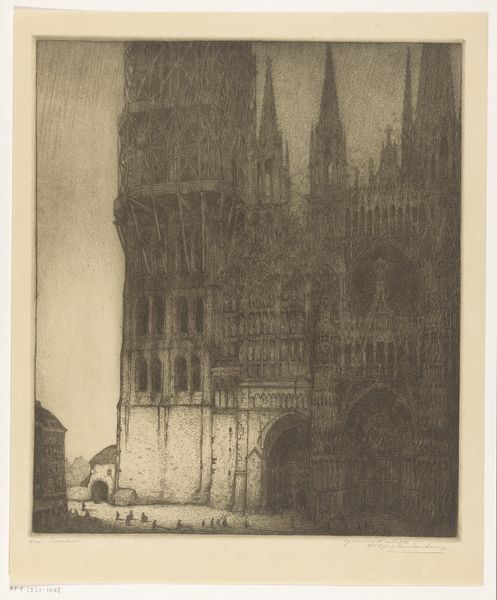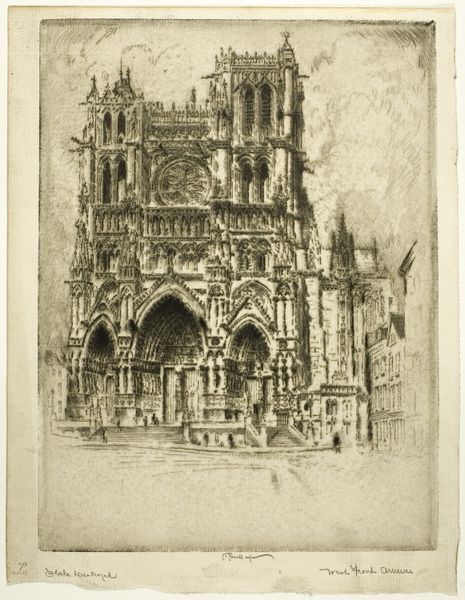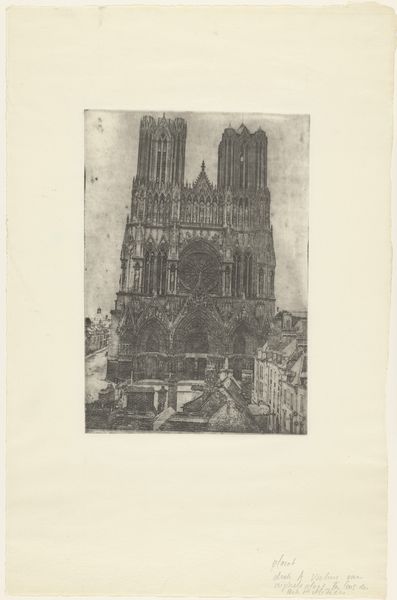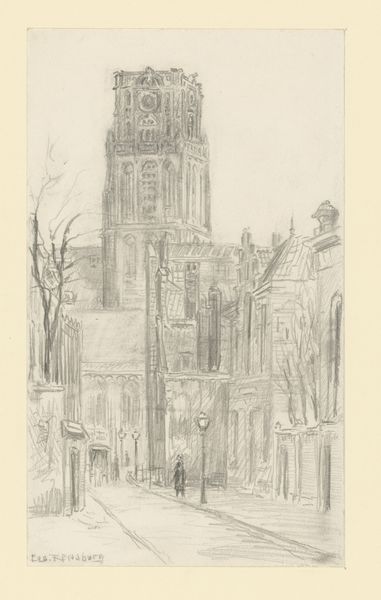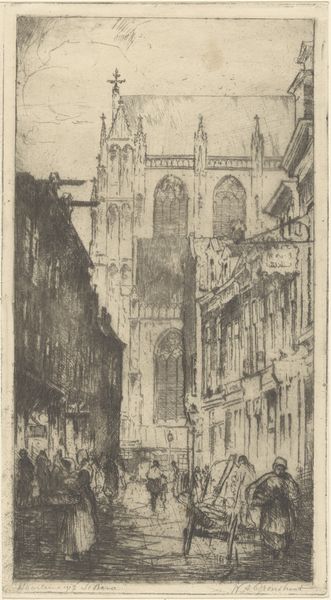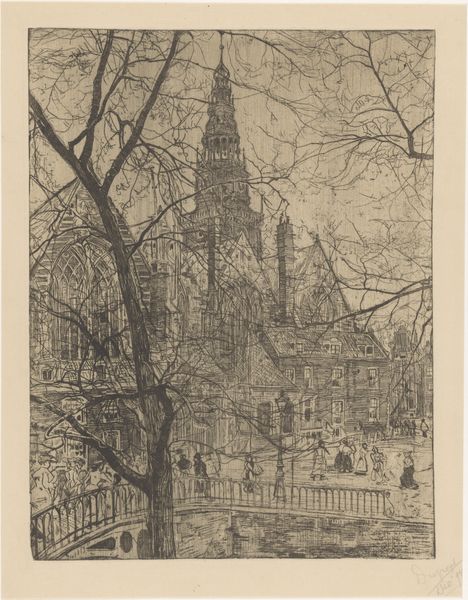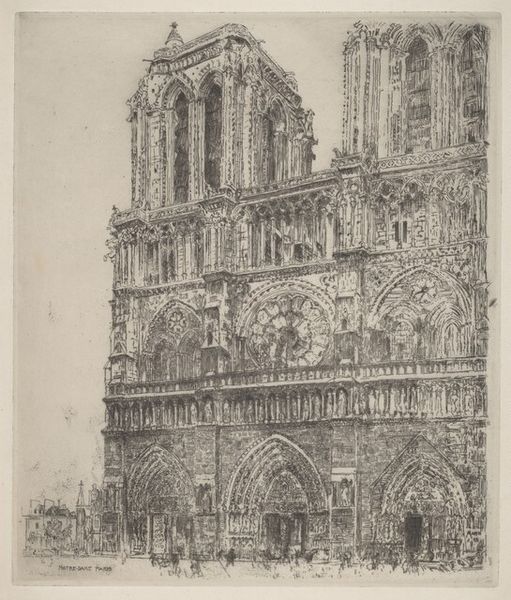
Dimensions: height 303 mm, width 252 mm
Copyright: Rijks Museum: Open Domain
Editor: This etching by Martin Monnickendam, titled *Notre-Dame van Parijs,* from somewhere between 1884 and 1931, presents a muted view of the iconic cathedral. It's an incredibly detailed cityscape. What symbols or hidden stories do you see within it? Curator: This piece carries echoes of collective memory, doesn't it? Notre Dame, as a symbol, extends beyond mere architecture. The etching itself, with its delicate lines, becomes a kind of map of cultural association. Notice the wheeled cart in the foreground. It is positioned almost like an altar; an element signifying mundane activity against this towering spiritual monument. How does the inclusion of everyday life alter your understanding of the cathedral's symbolic importance? Editor: I see what you mean! The juxtaposition almost shrinks the cathedral, making it feel more a part of the city rather than a separate, untouchable entity. Curator: Exactly! Consider also the power of light and shadow, created through the etching technique. Light, traditionally symbolic of divine presence, filters through the image, creating a sense of the cathedral’s continuous presence. Does this ethereal treatment change your perspective of the piece? Editor: Definitely. The light gives it a timeless feel, like this scene exists outside of a specific moment. I had focused on the gritty details of the etching before, but now I see this transcendent quality. Curator: Precisely, the imagery isn't frozen in time but seems to represent historical continuities and ever-present cultural relevance. I've seen more and more value of such juxtapositions in this symbolic scene. Editor: I appreciate your perspective. Seeing beyond the literal to grasp its layers of cultural significance has truly enhanced my appreciation for the artwork.
Comments
No comments
Be the first to comment and join the conversation on the ultimate creative platform.
